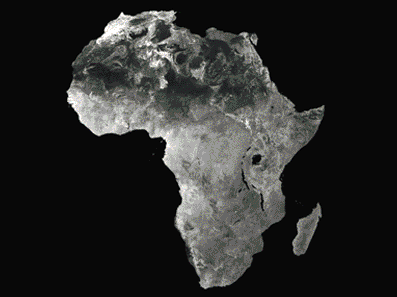Debunking three myths about Madagascar’s deforestation
DOI:
https://doi.org/10.4314/mcd.v7i3.3Keywords:
Madagascar, deforestation, slash and burn, agriculture, Africa, conservation, politics, farmers, fermiers, NGO, ONG, donateurs, bailleurs, donorsAbstract
After more than three decades of describing, explaining, and tackling deforestation in Madagascar, the problem persists. Why do researchers, practitioners, politicians, and farmers remain perplexed about this problem? This essay offers that our collective thinking of the past three decades has inadvertently perpetuated three myths. The first is that farmers are central agents of deforestation. The second is that the Malagasy state has the capacity and willingness to address the problem. And the third is that Madagascar is unique, especially relative to the rest of Africa. This essay examines each of these established ‘truths’ in an effort to overcome deforestation and all the degradation – environmental, social, and economic – that accompanies it. It argues that the assumptions behind conservation policies and projects are perpetuated by a class of powerful domestic and foreign individuals whose interests are best served by not questioning their validity. It concludes that fighting deforestation from now on must entail a deliberate, collective effort to question these assumptions and a willingness to open up the thinking to farmers and fellow Africans.
RÉSUMÉ
Le problème de la déforestation persiste à Madagascar et cela malgré les efforts acharnés des chercheurs, des professionnels du développement et de la conservation, des dirigeants politiques et des paysans qui, conjointement ou individuellement, essaient de décrire, d’expliquer et de résoudre ce problème depuis plus de trente ans. Pourquoi restent-ils donc tous désemparés face à ce sujet ? La présente analyse démontre qu’au cours des trente dernières années, nous avons collectivement commis un impair en perpétuant trois mythes. Le premier, selon nous, est d’avoir admis que les fermiers sont les principaux responsables de la déforestation. Ensuite, nous avons crû que l’État malgache avait la capacité et la volonté de remédier à la situation. Enfin, nous avons pensé que Madagascar est différente du reste de l’Afrique. Ce travail examine chacune de ces ‘vérités’ établies afin de mieux appréhender les problèmes de la déforestation et des dégradations environnementale, sociale et économique qui les accompagnent. Le principal argument est basé sur l’hypothèse qui veut que la politique et les projets de conservation sont défendus par une classe puissante composée à la fois de décideurs nationaux et étrangers qui ne mettent pas en question la validité de ces mythes afin de ne pas desservir leurs propres intérêts. En conclusion, pour combattre la déforestation, il faudra dorénavant remettre en question de manière collective et délibérée ces présuppositions et faire preuve de volonté pour inclure les fermiers et les Africains dans la réflexion.
References
Bayart, J.-F., Ellis, S. and Hibou, B. 1999. The Criminalization of the State in Africa. International African Institute, London.
Corson, C. 2012. From rhetoric to practice: How high profile politics impeded community consultation in Madagascar’s new protected areas. Society & Natural Resources 25, 4: 336–351. (doi:10.1080/08941920.2011.565454)
Englebert, P. 2009. Africa: Unity, Sovereignty, and Sorrow. Lynne Rienner Publishers, Boulder, Colorado.
EIA (Environmental Investigation Agency). 2010. Investigation into the Global Trade in Malagasy Precious Woods: Rosewood, Ebony and Pallisander. Available at http://eia-global.org/PDF/report--Madagascar--EIA--GW--forests--oct10.pdf
Horning, N. R. 2005. The cost of ignoring rules: Forest conservation and rural livelihood outcomes in Madagascar. Forests, Trees and Livelihoods 15, 2: 149–166. (doi:10.1080/14728028.2005.9752517)
Horning, N. R. 2008a. Madagascar’s biodiversity conservation challenge: from local to national-level dynamics. Environmental Sciences 5, 2: 109–128. (doi:10.1080/15693430801912246)
Horning, N. R. 2008b. Strong support for weak performance: Donor competition in Madagascar. African Affairs 107, 428: 405–431. (doi:10.1093/afraf/adn036)
IFAD (International Fund for Agricultural Development). 2006. Republic of Madagascar: Country Strategic Opportunities Programme. Available at http://www.ifad.org/gbdocs/eb/89/e/EB-2006-89-R-13.pdf
Index Mundi 2012. Madagascar Rural Population Growth. http://www.indexmundi.com/facts/madagascar/rural-population-growth accessed 6 December 2012.
Jolly, A. 2009. A letter on politics. Madagascar Conservation & Development 4, 2: 75.
Keller, E. 2009. The danger of misunderstanding ‘culture’. Madagascar Conservation & Development 4, 2: 82–85.
La Gazette de la Grande Île. 2012. Banque Mondiale: Un regard sur l’extrême pauvreté à Madagascar. 21 June 2012. http://www.lagazette-dgi.com/index.php?option=com_content&view=article&id=22998:banque-mondiale-un-regard-sur-lextreme-pauvrete-a-madagascar accessed 6 December 2012.
Marcus, R. R. and Kull, C. 1999. Setting the stage: the politics of Madagascar’s environmental efforts. African Studies Quarterly 3, 2: 1–8.
Repoblikan’i Madagasikara. 1990. Charte de l’Environnement et ses Modificatifs, Chapter II. Available at http://mg.chm-cbd.net/liens/divers/charte_envt_madagascar.pdf
Sayer, J. and Campbell, B. 2004. The Science of Sustainable Development: Local Livelihoods and the Global Environment. Cambridge University Press, Cambridge, UK.
World Bank Group 2012. World Development Indicators. http://data.worldbank.org/data-catalog/world-development-indicators/wdi-2012 accessed 6 December 2012.

Downloads
Published
Issue
Section
License
All journal content, except where otherwise noted, is licensed under a creative common Attribution 4.0 International and is published here by the Indian Ocean e-Ink under license from the author(s).


